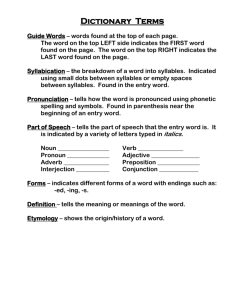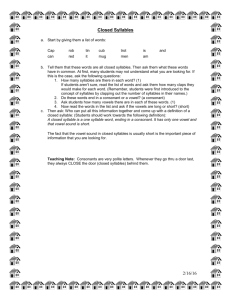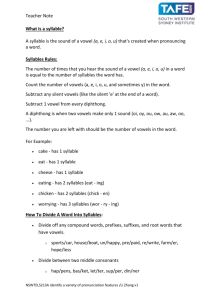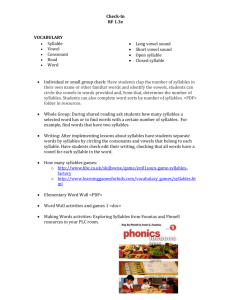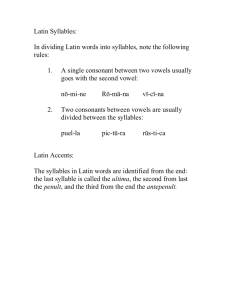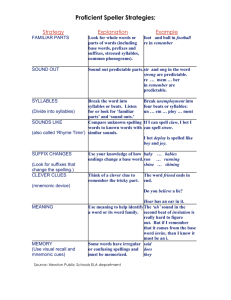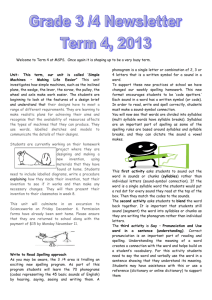LiPS
advertisement
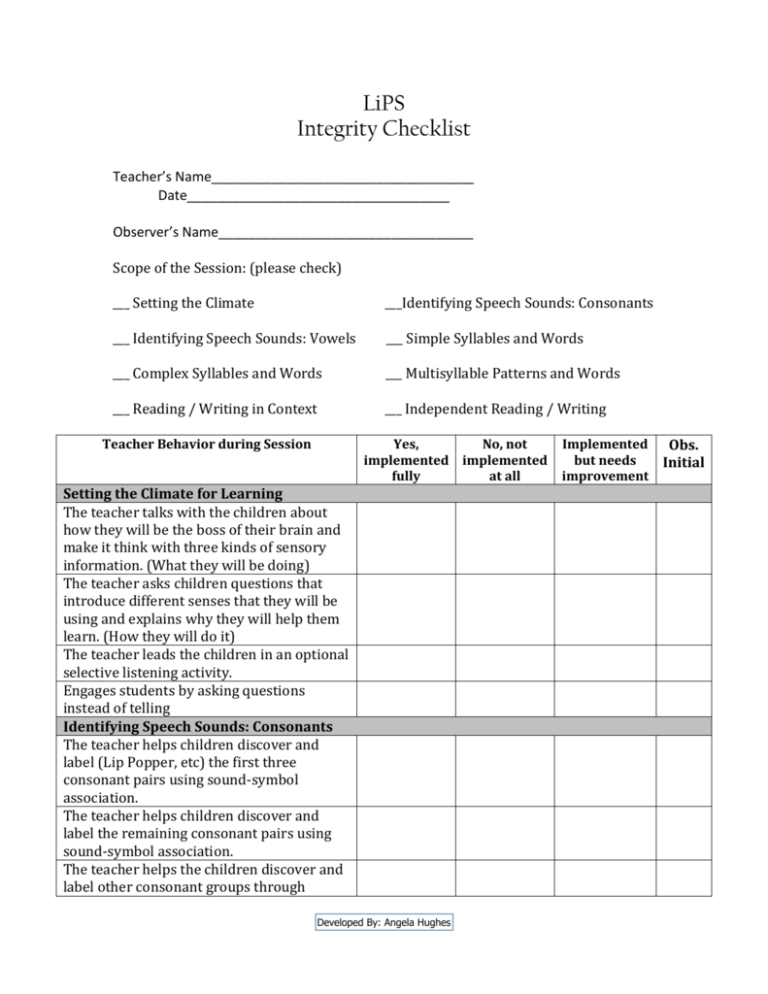
LiPS Integrity Checklist Teacher’s Name___________________________________ Date___________________________________ Observer’s Name__________________________________ Scope of the Session: (please check) ___ Setting the Climate ___Identifying Speech Sounds: Consonants ___ Identifying Speech Sounds: Vowels ___ Simple Syllables and Words ___ Complex Syllables and Words ___ Multisyllable Patterns and Words ___ Reading / Writing in Context ___ Independent Reading / Writing Teacher Behavior during Session Yes, No, not implemented implemented fully at all Setting the Climate for Learning The teacher talks with the children about how they will be the boss of their brain and make it think with three kinds of sensory information. (What they will be doing) The teacher asks children questions that introduce different senses that they will be using and explains why they will help them learn. (How they will do it) The teacher leads the children in an optional selective listening activity. Engages students by asking questions instead of telling Identifying Speech Sounds: Consonants The teacher helps children discover and label (Lip Popper, etc) the first three consonant pairs using sound-symbol association. The teacher helps children discover and label the remaining consonant pairs using sound-symbol association. The teacher helps the children discover and label other consonant groups through Developed By: Angela Hughes Implemented but needs improvement Obs. Initial sound-symbol association. The teacher helps children discover borrowers. The teacher encourages children to track sequences of isolated consonants. (optional throughout.) Identifying Speech Sounds: Vowels The teacher helps the children discover the Vowel Circle and label three vowels: /o, o, oo/ using sound-symbol association. The teachers helps the children discover, label, and order remaining vowels on Vowel Circle using sound-symbol association. The teachers helps the children discover, label, and place dipthongs and vowel+’r’ units using sound-symbol association. The teacher encourages children to track sequences of isolated vowels. (optional throughout.) Simple Syllables and Words: VC, CV, CVC The teacher encourages children to track simple syllables and words with mouth pictures and/or colored blocks or felts. The teacher encourages children to spell simple syllables and words by manipulating tiles, by writing, and by symbol imagery. The teacher encourages children to read simple syllables as tiles are manipulated, forming chains; with printed chains, then lists and flashcards; or in context with comprehension questions. The teacher introduces orthographic expectancies including final ‘e’ signal, 2 vowels go walking, c=/k/ or /s/, g= /g/ or /j/, y= /ie, ee, or i/. Complex Syllables and Words: VCC/CCV, CVCC/CCVC, CCVCC The teacher encourages children to track complex syllables and words with mouth pictures, colored blocks, by manipulating tiles, writing, reading as tiles are manipulated, with printed chains, or in context with comprehension questions. The teacher continues orthographic expectancies including the above used for simple syllables, doubling of final ‘f’, ‘l’, ‘s’, Developed By: Angela Hughes ‘z’, final ‘ge’/’dge’, ‘k’/’ck’, ‘ch’/’tch’. Mulitsyllable Patterns and Words: 2, 3, 4, 5 Syllables The teacher directs the children to track using number of syllables and whole syllable changes with colored felts, and track phoneme or syllable change with felts and blocks. The teacher directs the children to spell by manipulating syllable cards, writing, and with symbol imagery. The teacher directs the children to read as syllable cards are manipulated, using lists, and in context with comprehension questions. The teacher directs at 2 syllables the expectancies for –tion, -le, –ture, -y, plural, past tense, open syllable, doubling consonant for short vowel principle The teacher directs at 3 to 5 syllables expectancies for endings on suffix grid and its six orthographic principles. Reading / Writing In Context The teacher monitors the children while reading, offering feedback on errors. The teacher monitors the children during expository writing with a proofing plan, and offers feedback on errors The teacher directs the children to a specific action or response by asking questions. The teacher directly requests a specific action or verbalization. The teacher encourages the children to accompany the teacher in performing an action. Independent Reading / Writing The children spontaneously correct. The teacher double checks on both spelling and reading and encourages the children to do the same. Additional Comments: Developed By: Angela Hughes
